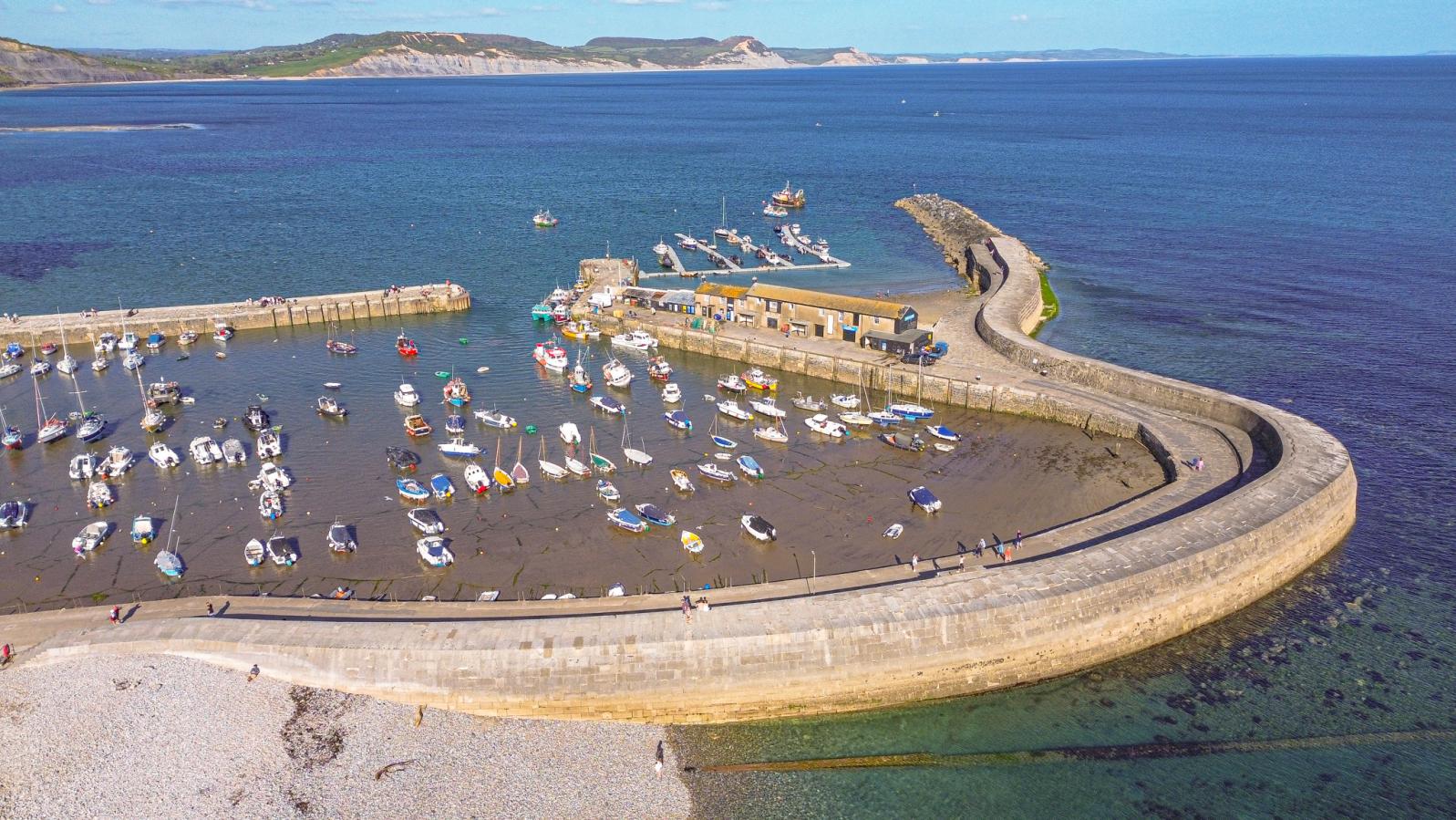The Cobb Stabilisation Scheme - Phase 5 of the Lyme Regis Coastal Protection Scheme

Phase 5 represents the final stage of the long-term Lyme Regis Environmental Improvement Scheme, a coastal protection initiative that began in the 1990s. The project focuses on the Cobb, the town’s Grade I listed harbour wall, which is both a cultural landmark and a vital coastal defence structure.
The aim of Phase 5 is to stabilise and strengthen the seaward (High) Wall of the Cobb. Decades of wave action and seafloor erosion have weakened its foundations, threatening the structure’s long-term stability and the town’s flood defences. The goal is to preserve the Cobb’s protective function well beyond 2044.
Without intervention, the Cobb could stop working as a breakwater by 2044, putting 100 properties at risk of flooding.
The Cobb dates back to the 13th century and has been destroyed and rebuilt several times throughout its history. It is one of Dorset’s most recognisable structures and has featured prominently in literature and film, including The French Lieutenant’s Woman and Wonka (2023), underscoring its cultural importance.
Plans under consideration include: Reinforcing the wall’s base with a low-level concrete “toe” foundation to prevent scour and undermining.
Installing tension piles to anchor and stabilise the inner harbour walls.
Undertaking additional measures to maintain the wall’s historical character while improving resilience to coastal forces.
Phase 5 has encountered significant funding challenges, with projected costs rising from an initial £3 million to approximately £8.5 million, leaving a shortfall of over £4 million. Ongoing discussions continue between Dorset Council and Natural England to balance structural needs with heritage and environmental preservation requirements.
Dorset Council’s flood and coastal erosion engineering manager Matthew Penny said a Defra consultation on a new approach to funding flood protection work from April 2026 might offer Dorset Council the chance to apply for additional funding – but, as yet, remains uncertain. Mr Penny said talks were ongoing between the council and Historic England over the project and, if all goes well, construction is still planned to start in the winter of 2026, continuing until the spring of 2027.
Construction, originally planned for the mid-2020s, has been delayed until at least autumn 2026 pending funding and design approvals.
While the main project remains in development, emergency repairs are periodically carried out to address immediate storm damage. These include filling voids with specialist concrete to maintain safety and limit further deterioration.